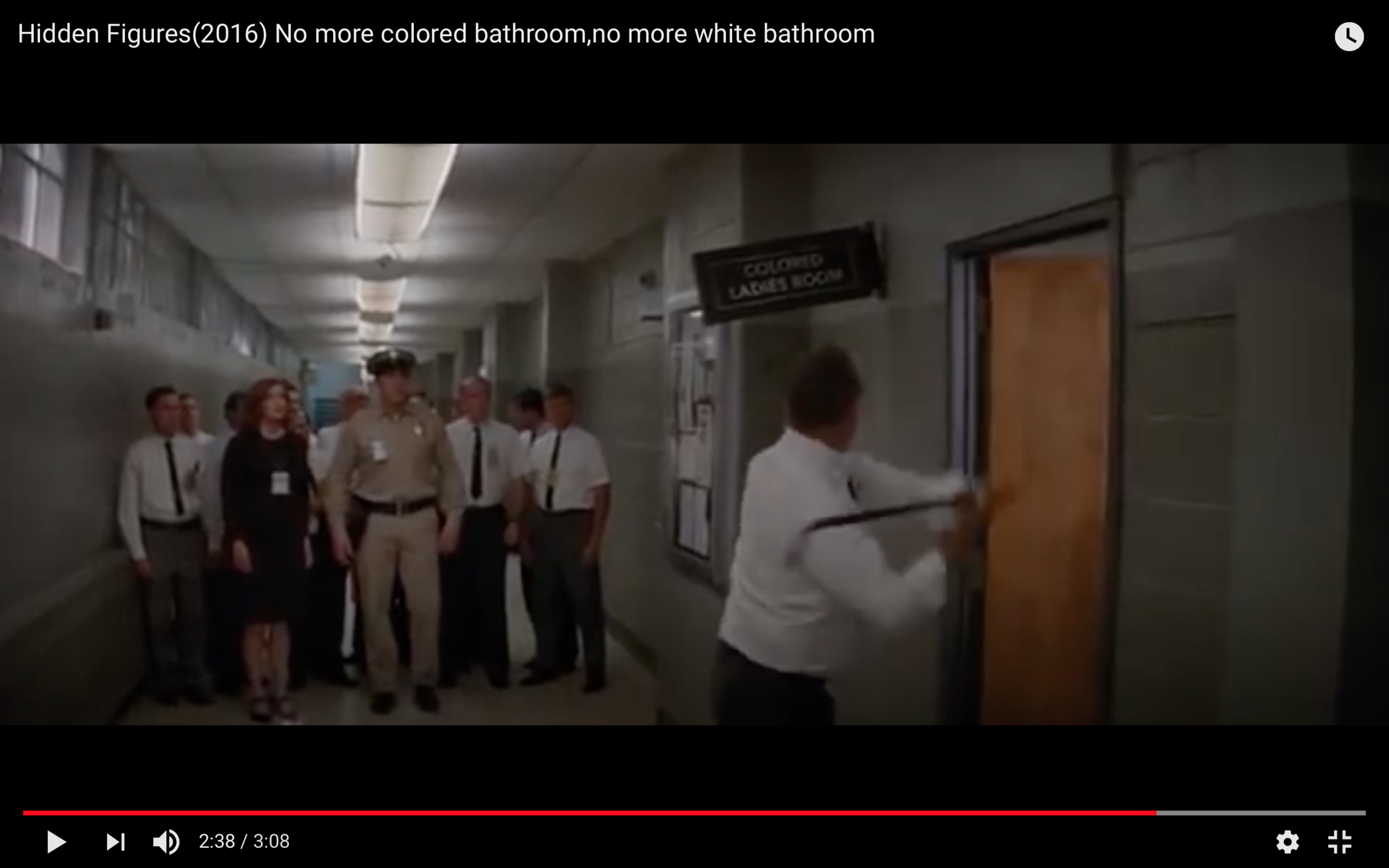I have been listening to Hidden Figures as a book on tape and also decided to re-watch the movie. As a writer, I’m always fascinated by and jazzed up by a successful conversion of written text to the screen, in this case, Academy Award-winning.
But in comparing the non-fiction best seller to the Hollywood movie, I was also excited by the fictionalizing of history and its implication, especially with the widening lens of #BlackLivesMatter and #MeToo, movements for which I am very grateful.
In the movie, an act of desegregation comes in 1961 with a crowbar in a powerful scene when space program manager (Kevin Costner) unlodges the Colored Women’s Bathroom sign and it falls to the ground with a reverberating clang. Watching on one side of the hallway is the group of African American women, the “colored computers.” Watching from the other side of the hallway are one white woman and several white men, including a badge-wearing security officer.
In reality, Desegregation of bathrooms and dining facilities happened gradually and quietly over the 1950s at Langley lab. In 1958, when the NACA made the transition to NASA, segregated facilities, including the West Computing office, were abolished. In real life, math genius Katherine Goble Johnson—main character of Hidden Figures (played by Taraji Penda Henson)—refused to walk the extra distance to use the colored bathroom and, in her words, "just went to the White one."
Obviously, this doesn’t make for great movie moments.
But it does speak to the reality of change.
Big changes tend to happen slowly over time, sometimes below the radar. Though humans are highly adaptable, we are slow to change. Change comes easiest when we can no longer stand the status quo. There are changes to local policies before federal ones. Then after the federal ones, local policy makers may contradict the edict for a while. The more people involved in change, the slower and more difficult it is. But that doesn’t mean it can’t or shouldn’t happen. But to make it happen takes perseverance at every level, personal, social, professional, educational, economic and political.
One of the greatest tools for change is a simple one. Acquaintance. Someone prejudiced against gay people, for example, is more likely to become aware of his discrimination and change his perspective once he actually knows gay people that he gets along with. Can one person make a difference? Darn tooting she can! Influence spreads like cracks in glass.
However, simplified and symbolic depictions like the one in Hidden Figures are important too. For one, art—as an expression of human experience—informs social norms just as social norms inform art.
The moment in Hidden Figures creates an ideal: the person tearing down the sign is a white man. In essence, the declaration that we “all pee the same color,” the tearing down of segregation in the movie comes from the power structure itself. And that is our hope.
Co-screenwriter Theodore Melfi said about the scene, "There needs to be white people who do the right thing, there needs to be black people who do the right thing, and someone does the right thing. And so who cares who does the right thing, as long as the right thing is achieved?"
It takes all of us doing the right thing. It can start with acquaintance. Then communication. And action.
This is demonstrated by Costner’s character in this scene. Co-screenwriter Allison Schroeder explained in an interview, “Of course the guys don’t realize what’s going on. [Harrison’s] not an outright villain, he’s just oblivious, and it would never occur to him in a million years that she didn’t have a ladies’ room.” The character of Katherine Goble Johnson had to point it out to him. And he knew and valued her already. Acquaintance. Communication. Action.
It might take time to see big changes, but together, we hold the crowbar that can tear down discrimination, hatred and oppression in our country. Overnight successes rarely really happen overnight.
